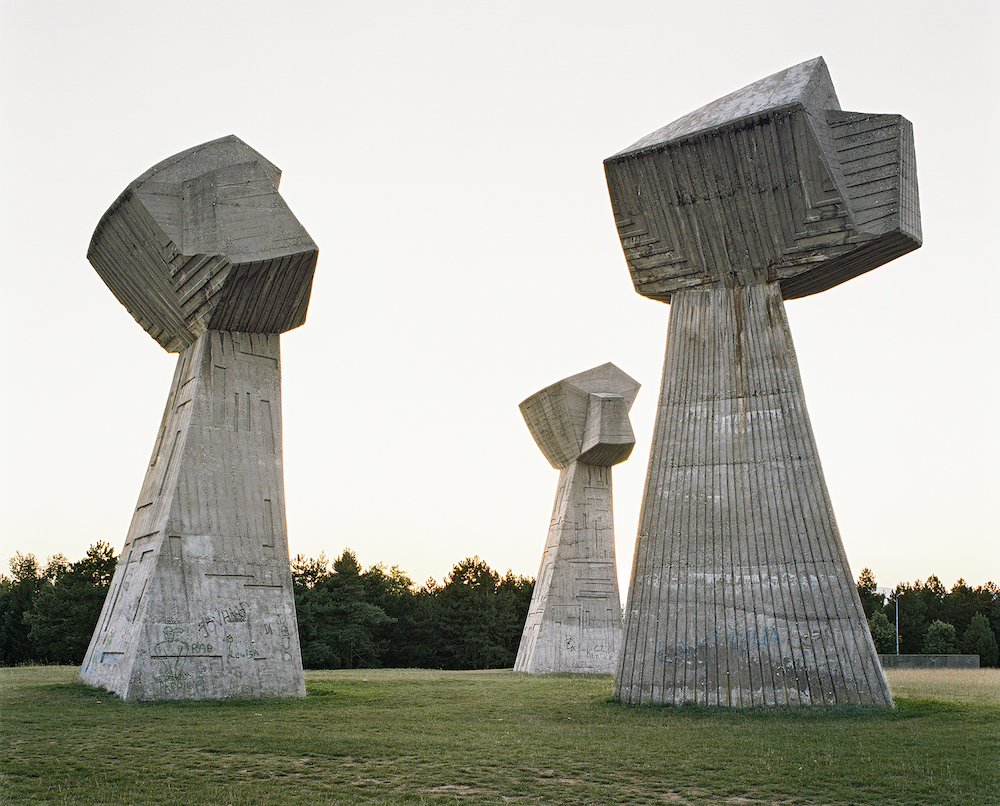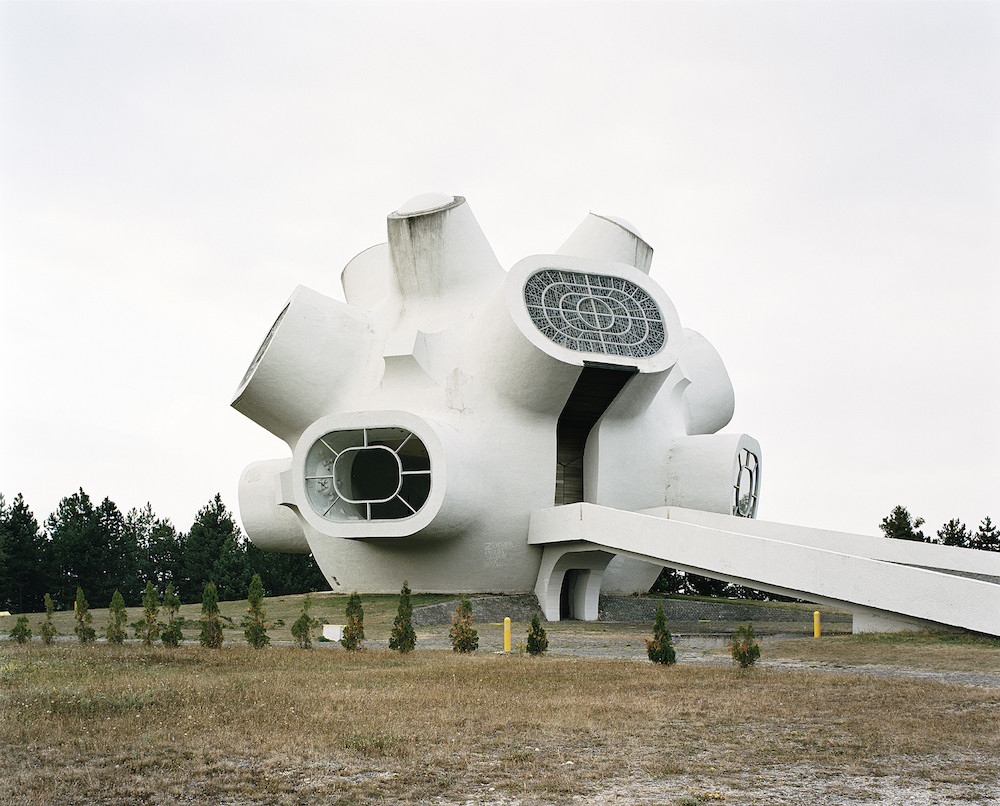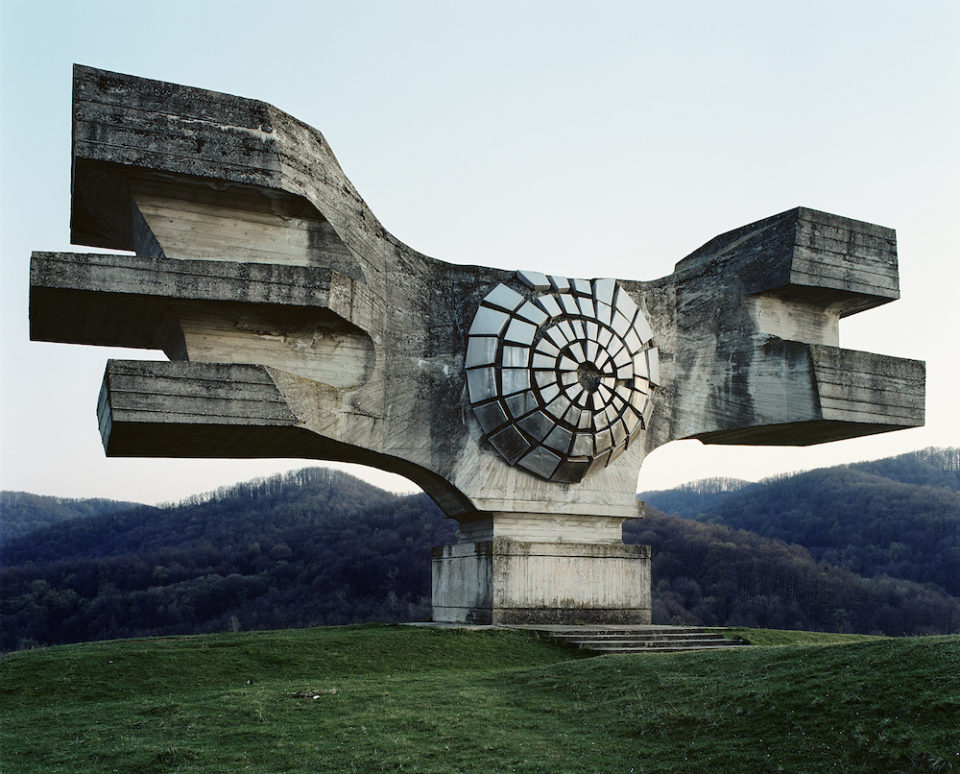Removed from their context, the strange concrete monuments dotting the landscape of the former Yugoslavia can seem abstract, inscrutable, even “alien.” Called “Spomeniks” after the Serbo-Croatian word for “monument,” the massive sculptures were virtually unknown to the rest of the world before photographer Jan Kempenaers documented them with these striking photographs between 2006 – 2009.
With renewed interest came the spread of misinformation, as some claimed the monuments were Communist propaganda. But in truth, they weren’t displays of patriotic nationalism; they each commemorated specific local events, often antifascist uprisings by local citizens. Though many of them were built by and for the victims of fascist regimes, they’re often seen online alongside Nazi monuments with no references to their true meaning.


Now, artists and activists from the countries that formerly made up Yugoslavia are fighting to clear up those misconceptions, and it’s important that we listen, says author Owen Hatherly at the Calvert Journal in a piece called “Concrete Clickbait.”
In many cases, the monuments were commissioned, funded and chosen locally, and their aesthetic reflects a shift in Yugoslavia towards an interest in modernism. In an age of rising international neofascism, these monuments have much to tell us, argues Hatherly, and “deserve better than to be glimpsed for a few seconds on Tumblr.”

“For Tihana Pupovac, a major problem is also the depoliticized framing of the monuments. Left without any indication of what they commemorate, or even of who designed them, the results are ‘deliberately oblivious’ to the anti-fascist struggle that they commemorate, or to why the artists and communities thought they were appropriate – which, once, they evidently did. ‘If we want to revive whatever we think can be found of politics in the aesthetic of these monuments, we have to go past nostalgia and past the sheer fascination.”
“Because, again, these monuments in themselves are not that unique, what was unique was the lived historical experience of socialism. And I think this is what lacks crucially from Kempenaers’ work. You can see this in the way he presents his work in former Yugoslavia and his total oblivion of the problem of anticommunism. And this makes him incapable of grasping the situation with these monuments today’, which in Croatia, is currently acute, not only with many of the monuments crumbling, but with a right-wing administration openly nostalgic towards the Ustaše and intent on burying whatever anti-fascist legacy might remain today.”


Erasing the context of the monuments also erases the scale of the atrocities that occurred in Yugoslavia, activists argue.
“’Yugoslavia was the fourth highest country in Europe in terms of civilian casualties’ during the Second World War [says Pupovac], and was also, along with Greece, the only country with a resistance movement – the multi-ethnic, Communist-dominated Partisans – that was large and strong enough to liberate the country almost without help from the Allies. The federal Yugoslavia that came out of this broke with Stalin and the USSR in 1948, and instituted a ‘self-management socialism’ of extreme complexity and decentralization.”
“This is what disappears in the Spomenik photos – as she puts it, ‘our lived historical experience of a revolution becomes only a cultural artefact’. [Architect and writer Dubravka] Sekulic argues that ‘a better way to engage with these monuments would be to use them as a tool to re-connect to the near past in which, as a society, we did not see space only as a commodity.’”
Read more about the meaning and history behind specific monuments at The Calvert Journal.
Top: Spomenik #1 (Podgarić); all images by Jan Kempenaers
